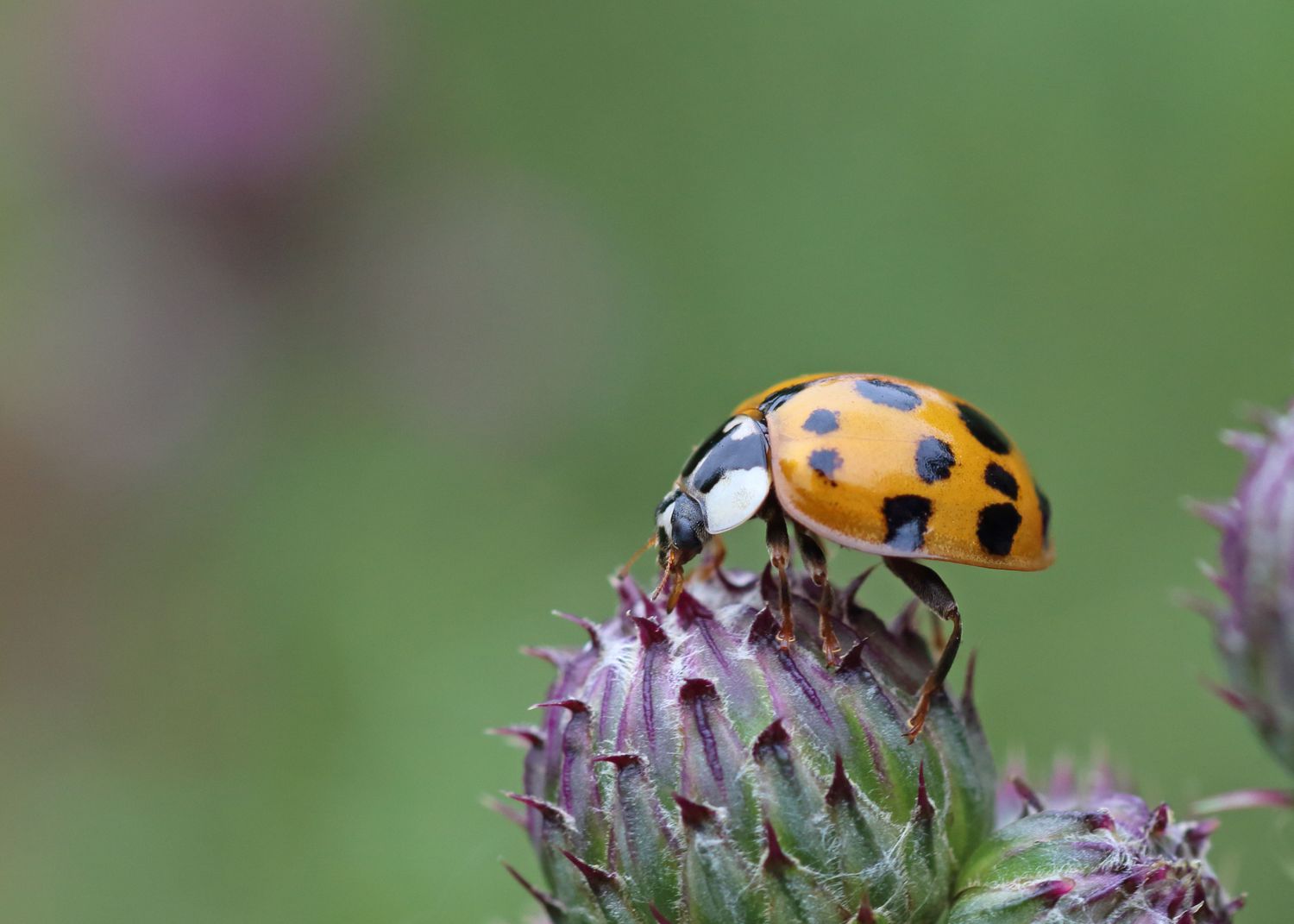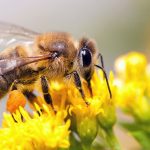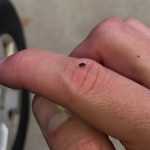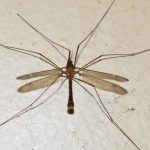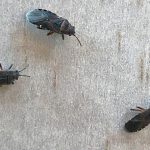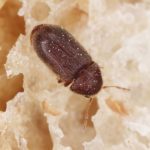Do you dread the arrival of fall because it means an invasion of Asian lady beetles in your home? These brightly colored insects, with their distinctive markings, may look adorable, but they can be a real pain for homeowners. Once they infest your surroundings, they can quickly spread and cause havoc.
Asian lady beetles lay their eggs in clusters, which hatch into larvae that feed on aphids. While this may seem good, the larvae can destroy your garden plants. When the larvae metamorphose into adults, they disperse and search for new areas to inhabit.
Don’t let these pesky insects take over your home and garden. There are plenty of effective techniques to get rid of them. From sealing up cracks and crevices to using natural remedies to repel them, many options are available to help you deal with this problem.
In this article, we’ll provide valuable tips on protecting your home from these invasive insects and keeping them from coming back. So keep reading and discover how you can say goodbye to Asian lady beetles once and for all.
What are Asian Lady Beetles?
Contents
These little insects, also known as Harmonia axyridis, originated from Asia and were introduced to the United States in the early 1900s as a biological control agent to manage aphids and other agricultural pests. However, they quickly became a significant pest themselves.
Measuring about a quarter of an inch long, Asian Lady Beetles can range in color from yellow to orange to red, with distinctive black spots on their wings that can vary in number and pattern. Although they may look similar to their native cousins, ladybugs, they can be distinguished by their unique white pronotum, a shield-like plate behind the head.
One of the most troublesome aspects of these beetles is their overwintering behavior. During the colder months, they gather in large numbers inside homes and other structures, seeking shelter from the cold.
They enter through cracks and crevices in walls, doors, windows, and other openings. Once inside, they can become a nuisance due to their presence and unpleasant odor.
While Asian Lady Beetles are generally considered beneficial insects because they feed on aphids and other plant pests, their congregating behavior can cause issues.
They can stain surfaces with excrement and emit a foul-smelling chemical when threatened or crushed. Moreover, some people may experience allergic reactions such as skin irritation or respiratory issues when exposed to them.
Fortunately, there are several ways to get rid of these pesky insects. Vacuuming them up is effective, but be sure to dispose of them outside your home immediately after use.
Insect repellents or sprays can also be used, but follow instructions carefully to avoid harm to pets or humans if ingested.
Sealing up cracks and gaps in your home can prevent them from entering altogether. You can also use natural remedies such as diatomaceous earth or essential oils to repel them.
Vacuuming Up Asian Lady Beetles
Vacuuming them up can be a game-changer. However, it’s crucial to do it the right way to avoid spreading the beetles or their pheromones around your home. As an expert on this topic, let me guide you through the correct steps for vacuuming up these pesky bugs.
First, you’ll need to equip yourself with the right tools. A vacuum with a bag or filter is a must-have, allowing you to contain the beetles and dispose of them properly.
A bagless vacuum can worsen matters as the beetles can escape through the exhaust. So, choose wisely.
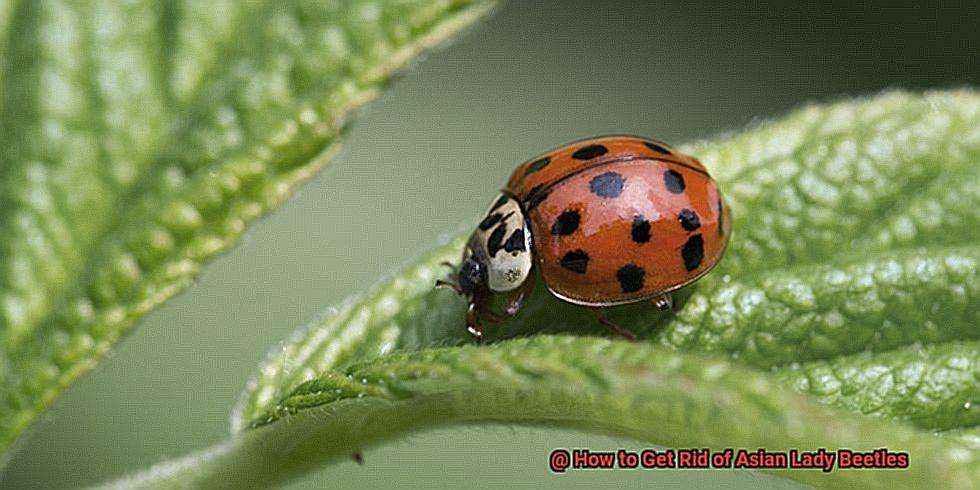
Next, attach a crevice tool to your vacuum hose to reach into those tiny crevices and tight spaces where the beetles may hide. Before you start vacuuming, seal off any openings in the room, such as windows and doors, to prevent more beetles from entering.
It’s also vital that you protect yourself during this process. Wear gloves and a mask to shield yourself from dust or allergens that may be kicked up during cleaning.
When ready to begin vacuuming, start at the top of the room and work your way down. Pay special attention to areas where the beetles congregate, such as around windows and light fixtures.
After finishing the task, immediately dispose of the bag or empty the canister outside your home. This will prevent any beetles or their pheromones from lingering in your home.
However, remember that vacuuming alone may not eradicate a full-on Asian Lady Beetle infestation. It should be done with other methods like sealing off entry points and using insecticides.
Vacuuming up Asian Lady Beetles is an effective way to deal with these pests in your home. Follow these steps, protect yourself, and dispose of them properly.
If you have a bigger problem, consider using other methods in combination with vacuuming.
Using Insect Repellents or Sprays
Don’t worry. Using insect repellents or sprays can be a game-changer in getting rid of these pests. However, choosing a product specifically designed for these beetles is important and using it safely and correctly to avoid any potential harm to humans or pets.
The first step in using insect repellents or sprays is to identify the areas where the Asian lady beetles are most active.
This can include windows, doors, and other entry points into the home. Once you have identified these areas, it’s time to choose a repellent or spray that targets these pests.
One effective option is diatomaceous earth, a naturally occurring substance that can be sprinkled around the perimeter of your home or in areas where the beetles are active.
This substance works by drying out the beetles’ exoskeleton, causing them to die. It’s an eco-friendly solution that’s safe for pets and humans.
Another option is to use an insecticide spray that contains pyrethrin or permethrin. These chemicals are toxic to Asian lady beetles and can be sprayed directly on them or in areas where they are active.
However, reading and following the instructions carefully is crucial when using any insecticide spray.
When using insect repellents or sprays, wearing protective clothing and gloves is essential to avoid skin contact and inhalation of the chemicals. Keep children and pets away from treated areas until the product has dried completely.
Remember, not all repellents or sprays are effective against Asian lady beetles. Choose products specifically designed for them and use them safely and correctly.
Sealing Cracks and Gaps in Your Home
These unwanted guests can easily enter your living space through small cracks and gaps in windows, doors, and walls. But don’t worry. Sealing these entry points is a crucial step in keeping them out.
To begin, inspect your home thoroughly for any visible gaps or cracks. Pay close attention to areas around windows, doors, pipes, and utility lines.
Once you have identified these areas, it’s time to fill them up. You can use a silicone-based caulk or foam sealant to do the job. These materials are easy to apply and can be found at most hardware stores.
In addition to sealing gaps and cracks, it’s important to ensure that all doors and windows are correctly fitted and sealed.
Check for any loose or damaged weather stripping and replace it as needed. This will prevent Asian lady beetles from entering your home through these openings.
Another effective way to keep these pests out of your home is by installing screens on all windows, doors, and vents. Ensure the screens are free of holes or tears that may allow pests to enter.
Following these simple tips, you can effectively seal all possible entry points and keep Asian lady beetles out of your home.
Remember to inspect your home regularly for any new gaps or cracks that may appear over time and seal them promptly.
Natural Remedies for Repeling Asian Lady Beetles
Natural remedies can help you repel these pesky insects without using harmful chemicals. Let’s explore some effective and safe ways to keep your home beetle-free.
Essential oils
Essential oils are a popular natural remedy for repelling Asian lady beetles. Peppermint, clove, and eucalyptus oils are known to be particularly effective. Mix a few drops of your chosen oil with water and spray it around doors, windows, and other entry points. The strong scent will deter the beetles from entering your home.
Diatomaceous earth
Another natural remedy that can be used is diatomaceous earth. This sedimentary rock is made up of fossilized remains of diatoms and can be sprinkled in areas where Asian lady beetles are commonly found.
When the beetles come into contact with the powder, it will stick to their legs, dehydrate them, and eventually cause them to die.
Vinegar
Vinegar is another effective natural remedy for repelling Asian lady beetles. Mix equal parts of white vinegar and water in a spray bottle around entry points such as doors and windows. The strong smell of vinegar will deter the beetles from entering your home.
Sticky traps
Sticky traps are also an effective way to catch Asian lady beetles.
You can easily make your own by applying a sticky substance like petroleum jelly or duct tape on a cardboard or paper surface. Place these traps near entry points and discard them once they are full of beetles.
Using natural remedies is not only safe but also environmentally friendly. Remember to seal any gaps or cracks in windows, doors, and walls, replace damaged weather stripping, and install screens on all openings to prevent future invasions.
Long-Term Prevention Tips for Keeping Away Asian Lady Beetles
Don’t worry, and there are ways to prevent them from ever entering in the first place. Here are five long-term prevention tips to help keep these bugs away for good.
Seal Up Your Home
The first step in preventing an Asian lady beetle infestation is to seal any potential entry points in your home.
These insects can squeeze through even the tiniest gaps around windows, doors, and vents, so it’s essential to be thorough when sealing them up.
Use caulk or weatherstripping to seal these gaps, and check your home’s foundation for any cracks or crevices that need sealing, too.
Check Your Screens
Another effective way to keep Asian lady beetles out of your home is to ensure your screens are in good condition.
Replace any damaged screens and ensure they fit tightly in their frames to prevent beetles from crawling through gaps in the screen.
Keep Your Home Clean
Asian lady beetles are attracted to warm, sunny areas with plenty of food sources, so keeping your home clean and tidy is crucial in preventing an infestation. Be sure to clean up any spills or crumbs right away and store all food in sealed containers.
Reduce Outdoor Lighting
Asian lady beetles are attracted to light, so reducing the light around your home at night can help deter them from being attracted to your property.
Consider using motion sensor lights or turning off unnecessary outdoor lighting when not in use.
Plant Repellent Vegetation
Certain plants, such as chrysanthemums, marigolds, and lavender, are known for repelling Asian lady beetles due to their strong scents. Planting these types of vegetation around your home can help keep these bugs away.
Following these long-term prevention tips can significantly reduce the likelihood of an Asian lady beetle infestation in your home.
Conclusion
In conclusion, don’t be fooled by the harmless appearance of Asian lady beetles. These brightly colored insects with distinctive markings can quickly become a nuisance in your home and garden, infesting your surroundings and causing chaos.
But fear not. There are numerous effective techniques to get rid of them.
From sealing up cracks and crevices to using natural remedies, you have plenty of options to deal with this problem. Vacuuming them up is a tried-and-true method, but dispose of them outside your home immediately after use.
If you prefer insect repellents or sprays, follow instructions carefully to avoid harm to pets or humans if ingested.
Sealing up gaps in your home can prevent them from entering altogether, while natural remedies like diatomaceous earth or essential oils can repel them effectively.
Taking long-term prevention measures such as sealing potential entry points in your home, checking screens for damage, keeping your home clean, and reducing outdoor lighting can significantly reduce the likelihood of an Asian lady’s beetle infestation.

